Having a pregnant German Shepherd welcome a new litter into the world is a fantastic experience no dog owner will forget. Although breeding your dog is exciting, you must ensure they are ready to reproduce.
If you’re considering mating your German Shepherd, male or female, you must know their best breeding age.
A male German Shepherd can breed after 12 months of age, whereas female GSDs should wait until their third heat cycle, typically around 18 to 24 months. It’s best to wait two years before breeding to ensure the female dog has fully matured and never mate her past 8 years old, ideally 5 or 6.
This article will explore:
- What heat cycles are
- The best time to mate German Shepherds
- Consequences of breeding too young or old
So, if you want to know all about the best German Shepherd breeding ages for males and females, you’ve come to the right place.
Let’s begin!
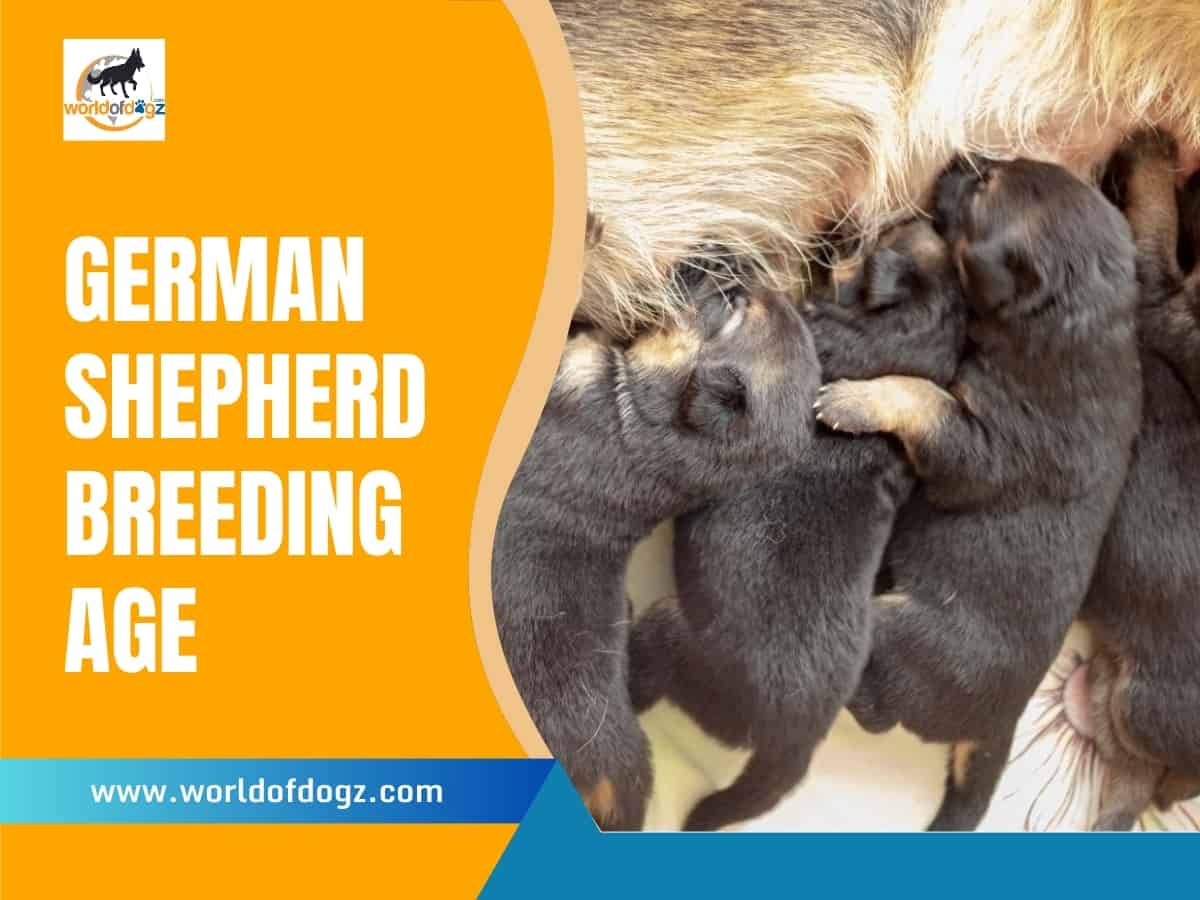
German Shepherd Breeding Age
Male German Shepherds
Male German Shepherds become fertile after six months of age but should not stud until they have reached sexual maturity.
Although males can technically impregnate a female, they should not be allowed to mate until they are fully sexually developed, so at least one year old.
Once an adult German Shepherd is sexually mature, he can mate anytime. If the dog is healthy, he may be able to keep his fertility and be sexually active for his lifetime.
However, just because German Shepherds can reproduce and have puppies well into their senior years does not imply they should.
German Shepherds enter their senior years around seven years of age, and as they get older, their fertility and ability to whelp healthy puppies diminish.
The quality and amount of male sperm are affected by age. So, although males could sire puppies at 9 or 10 years old, many breeders will check the sperm count monthly to check for quality.
Furthermore, if their doggy partner consistently delivers smaller litters or the puppies are weak and unwell, a breeder may decide that the male dog is too old to sire puppies.
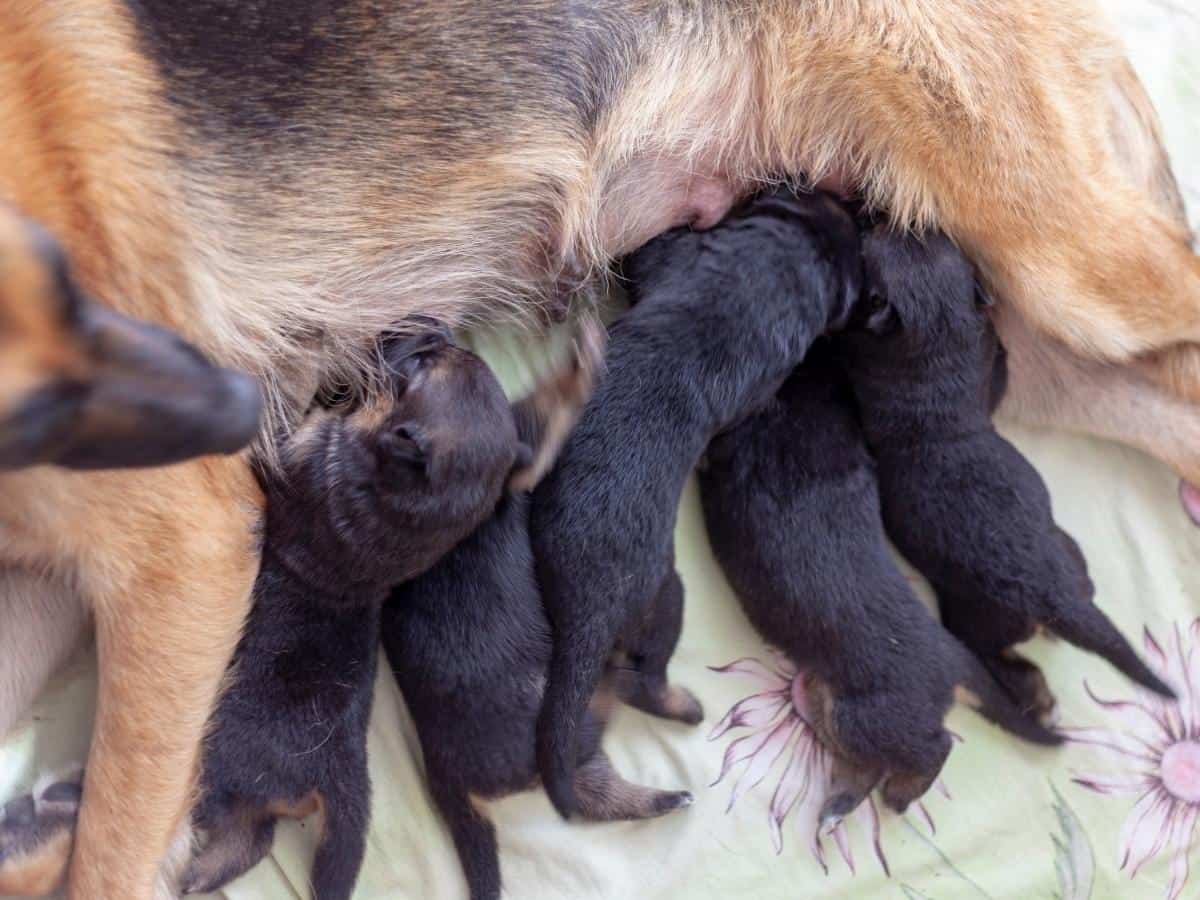
Female German Shepherds
Breeding a female German Shepherd before she’s fully developed inflicts several pregnancy-related complications. Breeding too early can also affect their mental state, harming the dog’s parenting ability.
Responsible breeders are patient and wait for the perfect German Shepherd breeding age.
A female German Shepherd will have her first heat cycle around 9-12 months old. This is when she can technically get pregnant, although you should never breed a female dog during her first heat cycle.
A German Shepherd’s heat cycle or season occurs approximately every six months until late in life. There’s no such thing as canine menopause – female GSDs go into heat all their lives unless spayed, of course.
Although a female GSD may be sexually active, she isn’t physically mature. Mating during the first season increases the chance of pregnancy complications, premature labor, and stillborn pups.
You should not breed a female German Shepherd until she’s physically developed, around the age of 18 to 24 months, so you should not breed until the third heat cycle or when she’s around two years old.
A female German Shepherd’s fertility starts to drop after five years of age, and canines that are too old can’t cope with pregnancy, so it’s essential not to breed the dam when too old.
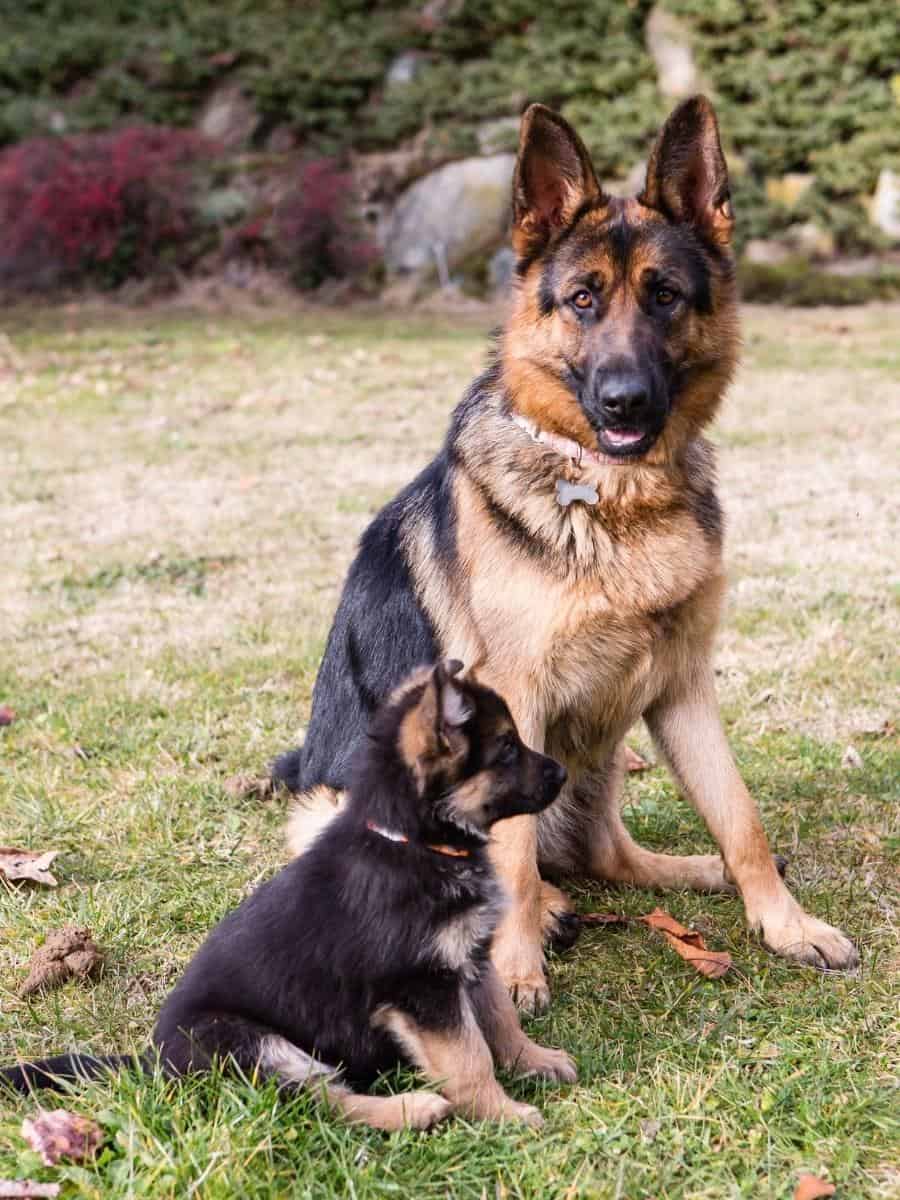
Labor can become complicated and comes with risks, and older females can have difficulty producing milk. You should retire a female GSD from breeding around 5-6 years old or after four or five litters.
Like the UK Kennel Club, many breed associations have enforced an age limit of eight years for breeding female dogs, as found in their Assured Breeders Standard.
However, this is for all breeds. German Shepherds, as a large breed, age faster. So, whereas a small breed such as a chihuahua might be okay breeding at 8 years old, a GSD shouldn’t breed past 5 or 6.
Understanding Female Heat Cycles
When a female German Shepherd goes into heat, her body prepares itself for conception. It’s your dog’s breeding season. Heat, breeding cycles, and periods all refer to the same thing.
Understanding your female German Shepherd’s heat cycles is critical for avoiding failed mating attempts or an unintentional litter of pups.
I’ll give you a short explanation below, but you can find greater insight into the topic in this article: German Shepherd First Heat and Cycle.
Although a German Shepherd stays in heat for around three to four weeks, her most fertile days begin 9 to 10 days into the heat cycle.
This high-fertility period lasts for approximately five days, so you should mate the German Shepherd between the 9th and 14th day of the female GSD’s heat cycle.
This heat cycle has four stages: proestrus, estrus, diestrus, and anestrus. Here’s a brief explanation of each:
- Proestrus: The female dog is getting ready to conceive. Male dogs will become attracted to her, but she won’t necessarily allow breeding just yet. This stage can last around 4-20 days. You’ll see physical signs such as a swollen vulva and bloody vaginal discharge. She may even tuck in her tail to cover her vagina and keep males away.
- Estrus: This is the main phase in the GSD heat cycle when ovulation occurs. The female dog is now fertile and ready to mate, and she will follow her bodily instincts and accept a male. Her discharge will change color to pink/brown, and she may raise her tail and seek out males. This stage lasts between 4-15 days.
- Diestrus: This stage lasts around 60 days and is a rest period before the next heat cycle if the female hasn’t conceived. The swelling of the vulva will go down. Estrogen levels are low, while progesterone levels slowly increase. The fertile window has now closed, and she will no longer accept males.
- Anestrus: This is the final stage of the heat cycle of your female German Shepherd and will last about four months. There’s no sexual activity during this phase while the uterus prepares for the subsequent possible pregnancy.
Most female German Shepherds will go into season twice a year. The ovarian activity of a female dog starts to decline in the fifth or sixth year of life.
Consequences of Breeding a GSD Too Young
Responsible dog breeding means waiting until the third heat cycle of a female German Shepherd before breeding.
Waiting until the dam is physically and mentally mature enough to bear and raise a litter is essential, as is waiting until the sire is old enough.
This allows any genetic or conformation issues to become apparent, making breeding a poor decision.
But what are the health concerns if a German Shepherd conceives too early?
- Physical maturity. The dam must be physically mature to carry a healthy litter to term. If the dog becomes pregnant before she has fully grown herself, it will put extra strain on her body, and she may not be able to deliver her pups. Young dams may miscarry, have puppies with disabilities, or have stillborn pups.
- Mental maturity. Pregnancy and raising pups require maternal instincts and a mature mind. If the dam is too young to breed, she may not understand what to do and may reject her pups.
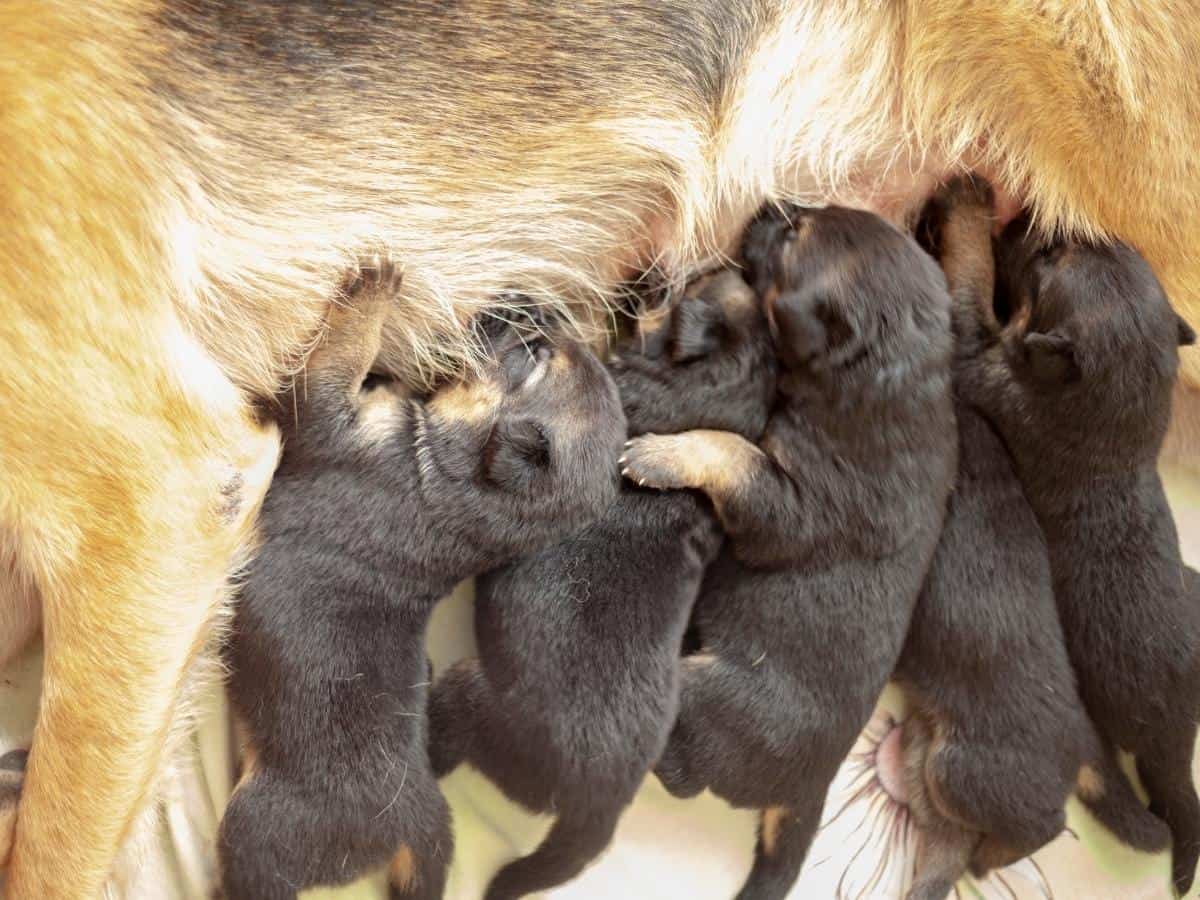
Consequences of Breeding a GSD Too Old
As stated, female German Shepherds can remain fertile for their whole lives. However, most females over the age of 8 have a tough pregnancy and difficulty giving birth. Significant problems are common during labor, and a caesarian section may be required.
Unfortunately, one or more stillborn puppies in a litter are pretty common in older dams.
Older German Shepherds may also have trouble producing enough milk to nurse their puppies, who will die if not bottle-fed. Senior female dogs are also at risk of pyometra, a potentially fatal uterus infection.
Due to all these risks and complications, most ethical breeders will retire their dams at around five or six years old.
Pre-breeding Health Tests
Both German Shepherd parents require proper care and conditioning to produce beautiful, healthy, strong puppies.
Apart from good physical health, they must also be in good mental condition. A mentally strong and happy female German Shepherd will make a better mother than one who is insecure or has an unstable temperament.
Regular exercise and an excellent diet and nutrition are essential to conditioning before conception. Bitches should not be overweight and should have good muscle tone before mating.
A month before breeding, the female German Shepherd should go through a pre-breeding examination by a vet. You must check her for common breed-specific health problems, such as hip dysplasia and degenerative myelopathy.
Vaccinations, flea, and worming treatments for both parents should be current.
DNA Testing
Healthy German Shepherds have a higher chance of having healthy puppies. It’s ethical to consider the major genetic disorders that can be passed on to pups if their parents have disease-causing genes.
I would also highly recommend any German Shepherd owner considering breeding have DNA testing done.
I recommend using the Embark Dog DNA Test from Amazon, which is a breed ancestry test and a health testing kit. This kit tests for over 210 genetic health risks and is a simple mouth swab.
Note: Clicking the above link(s) will take you to Amazon or an online store where we have an affiliate relationship. If you make a purchase, we may earn a commission at no additional cost to you.
If you’re a regular reader of my blog, you’ll know that my German Shepherd Willow is my first dog, and one of the aims of the site is to share my experiences and tips and provide advice to all new dog owners on this blog.
So here goes…
When I bought Willow, I thought I’d done everything right, such as buying from a reputable breeder, checking her parent’s hip scores (due to the risk of hip and elbow dysplasia), and ensuring she was UK Kennel Club registered.
I did get all these three right, so I was gutted when she was recently diagnosed with spinal arthritis.
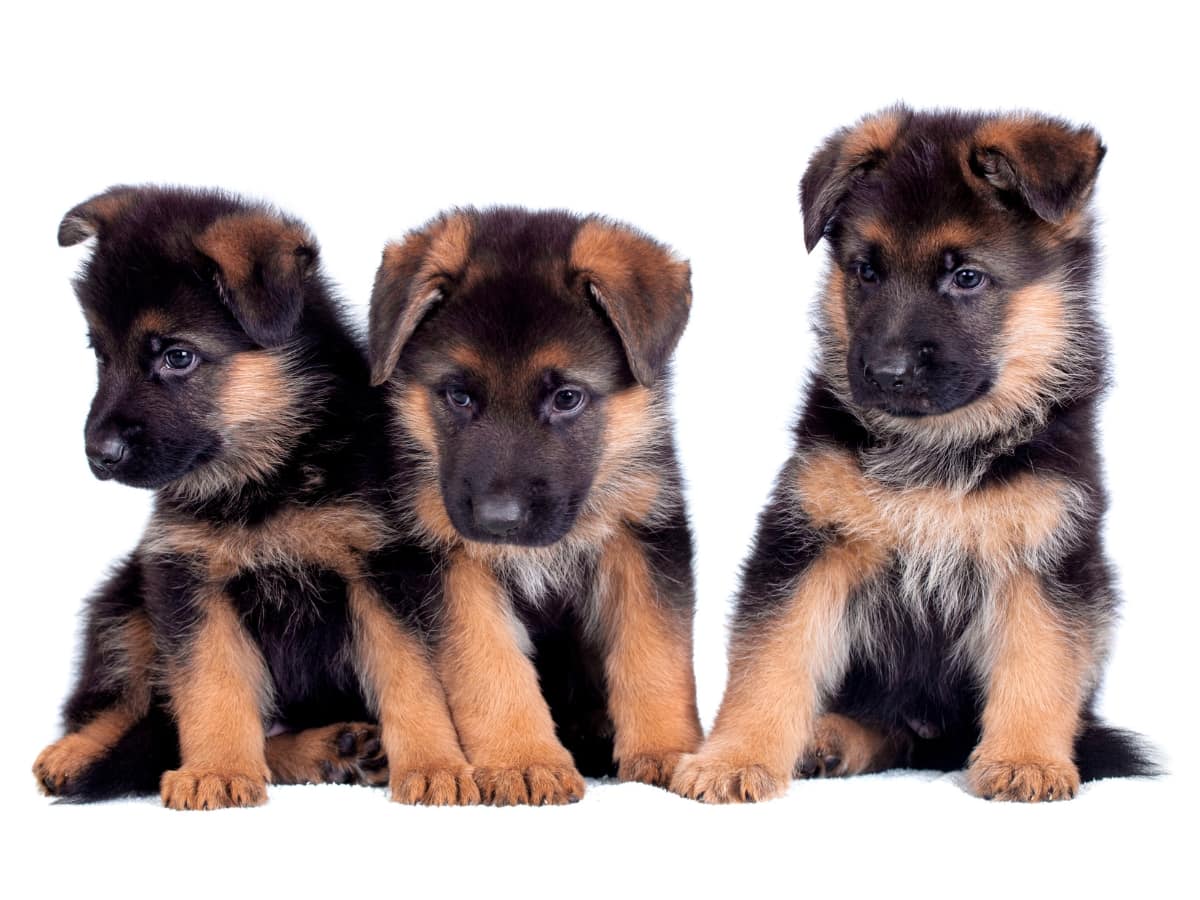
FAQs
What is the average age at which German Shepherds are bred?
The average age at which German Shepherds are bred varies depending on the breeder and the specific situation. Generally, German Shepherds are bred when they are between 18 months and 2 years old.
This is considered the ideal age for breeding as it allows the female to reach full maturity and the male to reach sexual maturity.
At 18 months, the female German Shepherd is considered to be at the peak of her fertility and health.
What are the consequences of breeding German Shepherds at an older age?
The consequences of breeding German Shepherds at an older age are varied and can be serious. First, older dogs are more likely to have health problems that could be passed on to their offspring.
This includes things like hip and elbow dysplasia, eye problems, and skin issues. Older dogs may also have a harder time conceiving and carrying a litter to term.
How does the age of the German Shepherd affect the litter size?
The age of the German Shepherd can have a significant impact on the litter size. Generally speaking, the older the female German Shepherd is, the smaller the litter size will be. This is because the older the female is, the fewer eggs she will have available for fertilization. As a result, the litter size will be reduced.
Final Thoughts
So there you have it – the right age to breed German Shepherds for both males and females. Here are the main takeaways from the article:
- Female German Shepherds should wait until their third heat cycle before breeding, so between 18-24 months of age.
- Male German Shepherds can breed after 12 months of age.
- A female GSD is most fertile nine or ten days after going into heat, and this high fertility window lasts about five days.
- You should perform pre-breeding health checks to ensure your female GSD is healthy and ready to conceive.
Related Posts You May Like:





